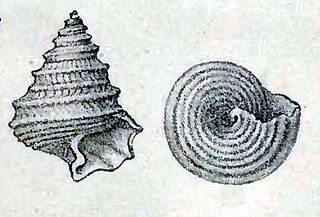
Seguenziidae is a family of very small deepwater sea snails, marine gastropod mollusks in the superfamily Seguenzioidea.
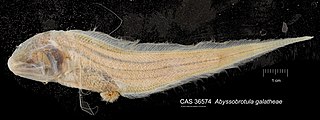
Abyssobrotula galatheae is a species of cusk eel in the family Ophidiidae. It is the deepest-living fish known; one specimen, trawled from a depth of 8,370 m (27,460 ft) in the Puerto Rico Trench in 1970, holds the record for the deepest fish ever captured. Although generally recognized, some have suggested that the record-breaking individual might have been caught with a non-closing net and therefore perhaps caught shallower.

The Galathea expeditions comprise a series of three Danish ship-based scientific research expeditions in the 19th, 20th and 21st centuries, carried out with material assistance from the Royal Danish Navy and, with regard to the second and third expeditions, under the auspices of the Danish Expedition Foundation. All three expeditions circumnavigated the world from west to east and followed similar routes.
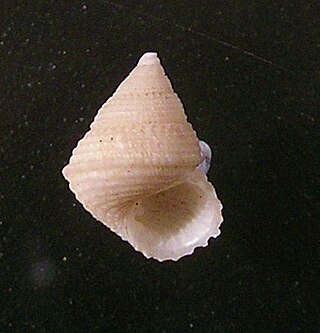
Seguenzioidea is a superfamily of minute to medium-sized sea snails, marine gastropod mollusks in the clade Vetigastropoda.
Comitas galatheae, common name the galatheae turrid, is a species of sea snail, a marine gastropod mollusc in the family Pseudomelatomidae, the turrids and allies
Lucerapex adenica is a species of sea snail, a marine gastropod mollusk in the family Turridae, the turrids.
Admete bruuni is a species of sea snail, a marine gastropod mollusk in the subfamily Admetinae of the family Cancellariidae, the nutmeg snails.
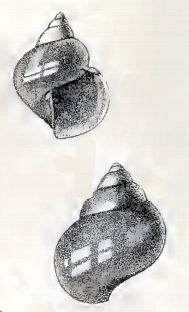
Guttula is a genus of sea snails, marine gastropod molluscs in the family Seguenziidae.
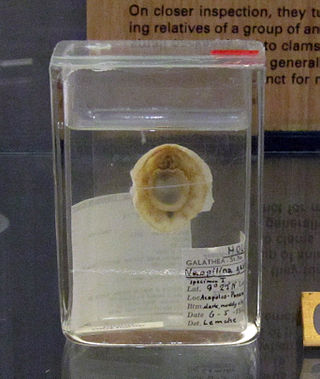
Tryblidiida is a taxon of monoplacophoran molluscans containing the only extant representatives: 37 species are still alive today, inhabiting the ocean at depths of between 175 and 6,400 metres.
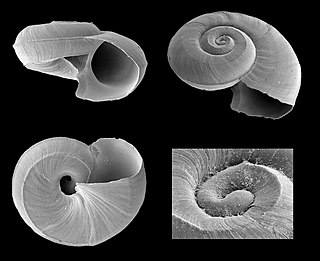
Trenchia is a genus of sea snails, marine gastropod mollusks, unassigned in the superfamily Seguenzioidea.
Trenchia wolffi is a species of sea snail, a marine gastropod mollusk, unassigned in the superfamily Seguenzioidea, the turban snails.
Henning Mourier Lemche was a Danish zoologist.

Notoscopelus elongatus is a species of lanternfish in the family Myctophidae. It is endemic to the Mediterranean Sea where it is found in deep water habitats, rising to near the surface to feed at night and descending to great depths by day. It is a common species with no particular threats, and the International Union for Conservation of Nature has listed its conservation status as being of least concern.

Xylophaga is a genus of bivalves in the family Pholadidae.

Pseudoliparis swirei, the Mariana snailfish or Mariana hadal snailfish, is a species of snailfish found at hadal depths in the Mariana Trench in the western Pacific Ocean. It is known from a depth range of 6,198–8,076 m (20,335–26,496 ft), including a capture at 7,966 m (26,135 ft), which is possibly the record for a fish caught on the seafloor. Various anatomical, physiological, molecular and genetic adaptions help this species survive in such depths.

Siphonodentalium is a genus of small tusk shells in the family Gadilidae.

Neopilina galatheae is a species of monoplacophoran, a superficially limpet-like marine mollusc. Its name means new Pilina. It lives in depths of 5000 meters and the shell is 3 centimeters in length in adults.
Lycodes vahlii, Vahl's eelpout or the checker eelpout, is a species of marine ray-finned fish belonging to the family Zoarcidae, the eelpouts. It is native to coasts of Northern Atlantic Ocean.
Sciadonus galatheae is a species of fish in the family Aphyonidae.
Narcetes stomias, the blackhead salmon, is a species of fish in the family Alepocephalidae (slickheads).










